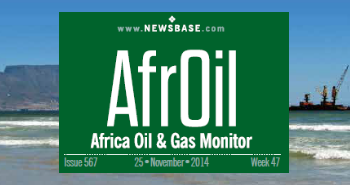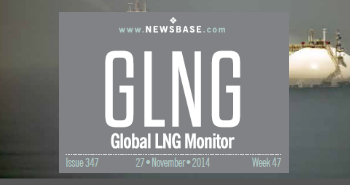BLOG: Is the high risk of Mozambique LNG worth the potential for high reward?

Major LNG projects are typically characterised by obstacles, challenges and delays, and even once the project does get the green light, more likely than not it will still suffer a few setbacks.
In the case of LNG projects in Africa, this bumpy path towards first production is amplified, not to mention the heightened challenges in keeping the LNG plant running smoothly without disruption once it is built.
And while a number of factors can contribute to LNG facilities failing to run at full capacity, security concerns typically take spot for African LNG plants. In the case of TotalEnergies’ Mozambique LNG project this rings true again.
The megaproject in the country’s northeastern province of Cabo Delgado has faced delay after delay since an attack in 2021 by a group linked to ISIS known locally as Al-Shabab.
The Mozambique government says 30 people were killed in the violence; however, an independent investigator has claimed that 1,402 people, including 55 TotalEnergies subcontractors, are either dead or missing.
The region has faced insurgency since 2017, even before TotalEnergies took a final investment decision (FID) on the project in 2019. More than 600,000 people have been displaced by the violence.
TotalEnergies and its partners were forced to declare force majeure immediately following the April 2021 attack on the town of Palma, where the Afungi project site is located.
Soldiers from southern African countries as well as Rwanda, Tanzania and Mozambique were deployed to the region. TotalEnergies also hired a humanitarian action and human rights activist, Jean-Christophe Rufin, in December 2022 to complete an independent mission examining the humanitarian and security situation in the region.
An action plan for the restart of construction on the project was unveiled in May 2023. The report called for the establishment of a $200mn foundation to support socio-economic development programmes in the province and compensation for local villagers affected by the project.
Two years on from the release of the action plan, the security situation has improved enough that TotalEnergies has begun focusing attention on securing financing for the restart of the $20bn project.
In March, TotalEnergies secured a $4.7bn loan from the US Export-Import (EXIM) Bank. The bank originally agreed to the loan in 2020, along with commitments from the credit agencies of the UK and the Netherlands. However, the force majeure declaration means the financers must now reaffirm their support.
Pressure is now mounting on the UK and the Netherlands to recommit to financing the project. But some obstacles are appearing. For instance, in February The Financial Times reported that London was examining the possibility of legally extricating itself from its June 2020 commitment of $1.15bn of loans and guarantees.
Meanwhile, Netherlands Finance Minister Eelco Heinen has indicated that an external investigation is being carried out into alleged human rights violations by Mozambican security forces. The findings of the investigation will be presented to the parliament prior to a final decision being taken on whether to grant financial support for the project.
Indeed, financing and security concerns have clouded the project’s future. Initial plans for the project had foreseen commercial operations beginning in 2025. A revised goal to begin production in 2029 also now appears to be unlikely.
The business case for the project is certainly strong. The Golfinho and Atum gas fields in the Rovuma Offshore Area 1 are estimated to boast an enormous 65 trillion cubic feet (1.9 trillion cubic metres) of gas. That is enough gas to meet the European Union’s current gas demand for six years.
Upon completion of the first phase, Mozambique LNG would boast a production capacity of 13.1mn tonnes per year (tpy) and the facility would be Africa’s biggest foreign direct investment (FDI). The project also has the potential to be expanded to up to 43mn tpy, which would make it one of the biggest LNG plants in the world.
Certainly, Mozambique LNG could offer an enormous windfall for the southern African country. Maputo projects that at peak levels in the 2040s Mozambique’s gas exports could bring in more than $6bn a year. This would offer an enormous source of revenue for a country that is facing a credit crunch and has an annual economic output of $16bn.
Indeed, the potential reward for the project is undeniable, but the risks are sky-high too. Setback after setback has plagued the project’s construction. And funding from the UK and Dutch credit agencies is hanging by a thread, particularly from the latter as Amsterdam carries out an investigation.
Another LNG project in Mozambique is also facing legal challenges. The Mozambican civil society group Justica Ambiental and three South Korean climate activists have filed a lawsuit seeking to block funding for the $7.2bn Coral North floating LNG project being developed by Italian energy giant Eni.
The plaintiffs argue that financing from South Korea’s credit agency, KEXIM, and its trade insurance corporation, K-SURE would support a dramatic expansion in Mozambique’s fossil fuel sector, undermining efforts to slow the pace of global warming. The climate activists claim this violates South Korea’s constitutional and legal obligations.
Certainly, Mozambique faces the risk of going down the same path as Nigeria. A resource curse that has limited the West African country from cashing in on its vast natural gas resources due to a number of factors, but top of the list is security.
Pipeline vandalism and sabotage has long plagued the Nigeria LNG (NLNG) plant even forcing it in 2022 to declare force majeure and seek an exemption from contractual obligations.
Without question the business case for Mozambique LNG is strong, if security can be assured. Without security assurances, Mozambique LNG faces the risk of turning into an underperforming LNG facility and suffering a similar fate to Nigeria’s NLNG.



Follow us online